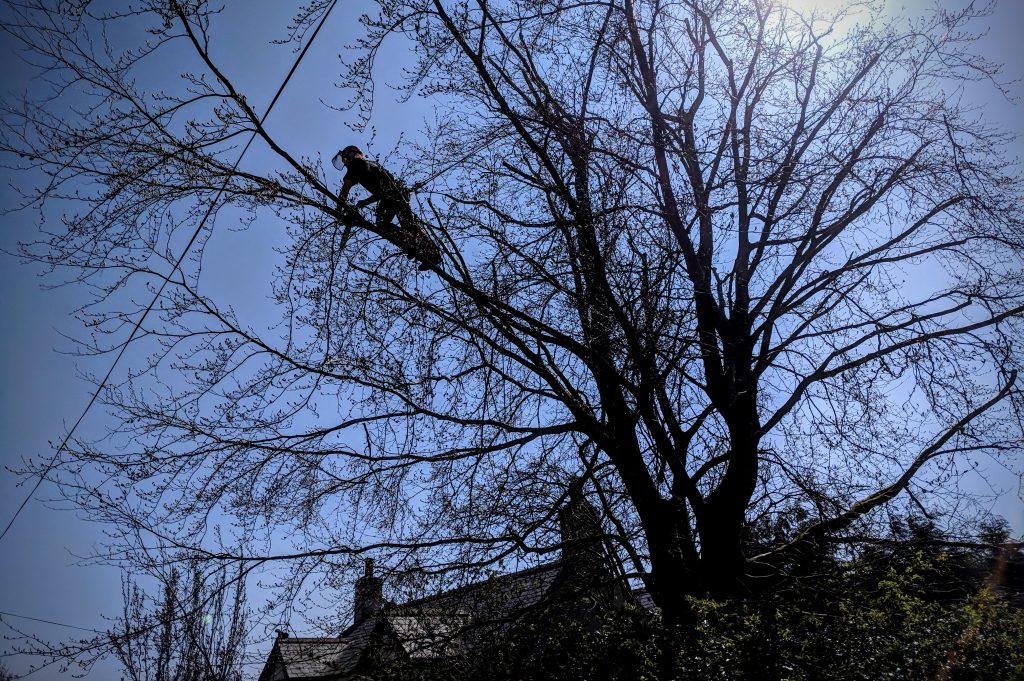Tree pruning is the most asked for service that we provide and it is carried out for various reasons: aesthetic and practical goals, to create better branch structure, air filtration, tree posture and general health.
All trees bring their own problems and, of course, you have you own requirements, but pruning can essentially be broken down into key categories;
Crown Reduction & Reshaping
Crown reduction & reshaping, whilst difficult to do correctly, is a common but drastic practice in tree surgery. It is a process to reduce the height and/or spread of the crown by selectively pruning the smaller outer growth and attempting to maintain the trees natural form.
- Reduce spread when the tree begins outgrowing its permitted space.
- Restore balance when the canopy has become misshapen, eg. storm damage.
- Reduce weight on potentially dangerous limbs.
- Remove obstruction around lights, overhead cables, signs, etc.
- Reduce the wind sail effect on a weak or diseased tree.
- Cosmetics.
The amount to be removed is normally given as a percentage or specified as the distance to be reduced, and as with most crown pruning, no more than 30% should be removed to limit the stress to the tree.
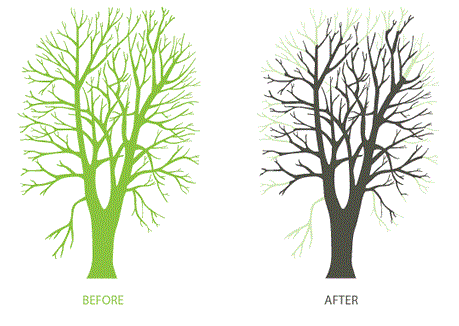
Crown Lifting
Crown lifting is the simplest form of pruning and is a case of removing the lower branches of the tree to a given height.
- Allow sufficient clearance for vehicle access & pedestrians.
- Space for buildings & structures.
- Improve line of sight and views.
- Allow light penetration to buildings or shaded areas.
The amount removed is specified as the clearance wished to be obtained.
The recommended ratio of live crown left after pruning is two thirds of the total tree height to maintain a balanced look to the tree.
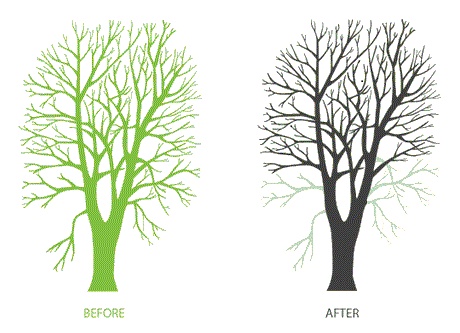
Crown Thinning & Cleaning
Crown thinning is complex pruning usually performed on broadleaved tree species and is the removal of a percentage of inner & outer growth, whilst maintaining the overall shape of the tree , without affecting it’s size.
- Allow light to penetrate through the crown to plants, buildings, etc.
- Reduce the wind sail effect to increase stability in adverse weather.
- Reduce the weight of heavy branches and reduce their chance of failure.
Typically we begin a crown clean by removing any dead, diseased, or weak branches, along with some epicormic growth in an area. Then we begin removing any secondary and small live growth – paying particular attention to any badly placed or misshapen limbs or limbs that are crossing / rubbing.
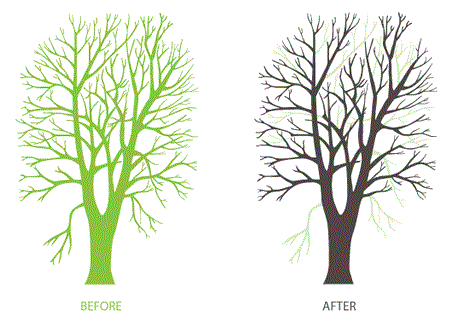
Pollarding
Pollarding is a traditional form of pruning that has been common in Europe since the medieval era. It is practiced worldwide and particularly in the urban environment where space is at a premium.
- Restrict the trees growth
- Prevent potential future obstruction.
- An alternative to completely removing the tree.
Once pollarding has commenced, it should be performed regularly as the resulting regrowth will be vigorous and have a weaker structure. If pollarding is lapsed there is greater risk of decay at the cut points and ultimately an increased chance of structural failure.
As a general rule, a cycle of three to five years is acceptable for re-pollarding, depending on tree species.
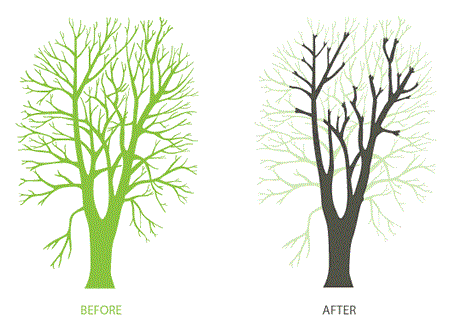
To discuss your requirements and to arrange a free quote call 01536 761337
